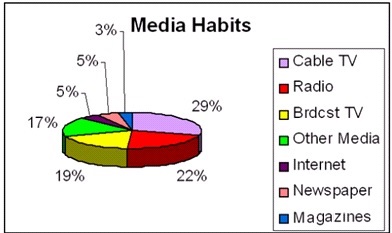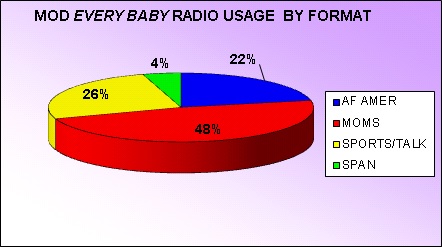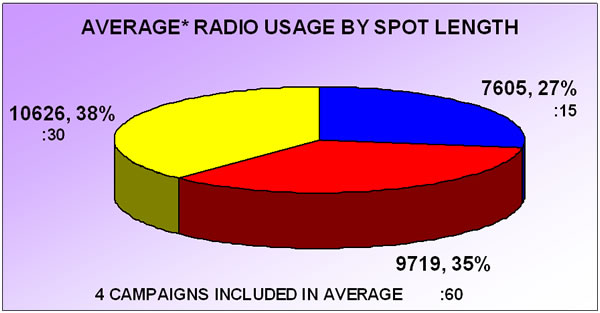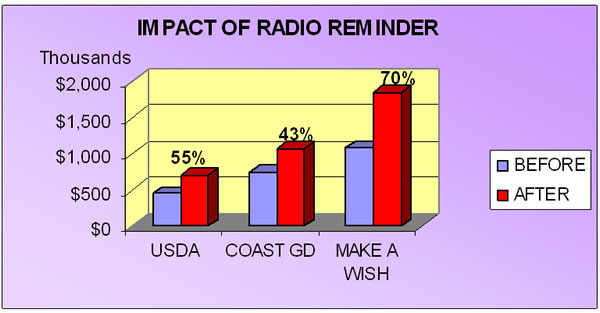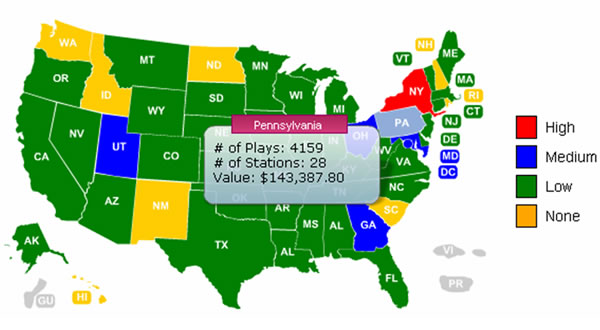![]()

10 THINGS YOU NEED TO KNOW TO BE SUCCESSFUL WITH RADIO PSAS
by Bill GoodwillQuestion: What is the mass medium that does the best job of reaching demographic subsets of our population, engages people out of home when they are stuck in traffic, or jogging or at the beach? The answer of course is radio, and its portability is hard to beat. According to the Radio Advertising Bureau, radio:
Cumulatively reaches a total of nearly 233 million people and 93% of those over the age of 12.
Stacks up favorably against other media with people spending more time listening to radio than with any other medium except cable TV.
Reaches 75 percent of all consumers every day and 95 percent every week. People listen to radio from 14 hours o over 21 hours every week, depending upon their age.
However to use this medium effectively, here are some things to consider.
1. Provide Good Production Values and Format Variety.
If a friend of yours offers to produce an inexpensive radio PSA in their home studio, the chances are your message is not going to make it on the air. The competition to get radio airtime today is absolutely intense and your PSAs must be as good as the paid spots airing around them. Find a good radio producer and let them work their magic. The best radio PSA we’ve distributed was one where our client provided PSAs in four different musical and ethnic formats. It takes a little longer to write and record, but the airtime value will far surpass the time and cost.
"Since radio is not a visual medium, it is important to put a lot of thought into the creative message," points out Roger Vilsack, an award-winning producer with more than 25 years experience in the medium. "Your radio production must be even better and more creative than television, because you don't have visual images, so you have to create them with words and sound effects," Vilsack says.
2. Cut Through the Clutter With Attractive Packaging.
No one knows how many individual PSA packages a radio station gets at any given time, but it is safe to say that it is a big number and growing bigger yearly as organizations try to get their vital messages out to the public. To cut through the clutter, you need to have an attractive packaging concept and it should conform to the USPS’s new automated handling equipment in order to minimize postal costs. We use a concept called the FlexMailer that does both, and it could help you save thousands in postage charges.
3. Utilize the Entire Capacity; Produce a Variety of Spot Lengths.
One of the biggest mistakes we see when clients produce radio PSAs – and TV too – is that they do not offer a variety of spot lengths. PSAs are placed in unsold airtime which is completely unpredictable. To increase your chances of getting on the air, produce at least three different spot lengths – a :60, :30 and :15. It provides more flexibility to the station and it results in more value to you.
When you use use a CD to distribute a PSA, typically you are using a very small part of the capacity of the CD-ROM. It is costing you the same if you place 3 minutes of your PSAs on the CD, or if you use the entire capacity. Accordingly, you should try to put other types of content on the disk, including audio news releases (longer form audio pieces).
4. Provide “Enhanced” CDs.
Like many other distributors, we initially assumed that MP3s had become the “de facto standard” for radio PSAs. One day we got an email from a small market radio station saying they could not use MP3s. That’s right - there are still some smaller market stations which use CD-audio to record PSAs onto broadcast carts, and then play those cartridge tapes on the air. One staffer said, “I don’t even have a computer hooked to my board.” We contacted a former production manager at a radio station and he recommended that we send both CD-Audio files as well as Enhanced CDs. These include the CD-Audio tracks along with CD-ROM/MP3 files for those stations which would prefer to use this computer-friendly format. That way, it’s easy for any station to play your PSAs, and if you don’t make it easy, they won’t bother.
5. Seek Endorsements.
Try to get endorsements from organizations such as the National Association of Broadcasters or large media conglomerates, and if successful, use their logo on all packaging elements. For the March of Dimes we distributed a special package with the Clear Channel logo on the cover to all the stations in their network. It was the best performing radio PSA we’ve ever distributed.
6. Involve State Broadcast Associations.
Every state has a state broadcast association and you should think about sending them copies of your PSAs and any background information which may explain the importance of your issue. Hopefully they will promote your campaign in their external communications channels.
7. Use Electronic Tracking.
There are several electronic monitoring services which will greatly increase your usage, particularly in the larger markets where busy public service directors may not return your business reply card showing usage. However, make sure you have a way to avoid redundant reporting from these two sources.
8. Help the Station Help You.
Make it easy for the public service director to review your PSAs and he or she will take the path of least resistance in their decision-making. Provide written descriptions of the spots which are helpful when station staff quickly scan your materials to determine the best “fit” for the station’s demographics. When you create MP3 files, try to give them helpful, descriptive file names - such as: OurOrg_5kWalk_Country_30.MP3. And above all, make sure that the PSAs are in the same order as listed in the packaging and CD itself.
9. Take Follow-up Action.
We often say that evaluation for the sake of gathering numbers is a meaningless exercise. It is what you do with the data that counts.
About 85% of the stations to which your radio PSA was distributed are not going to respond unless you do something more. Yes. 85%. But in the direct mail world that is still an excellent response rate. To improve your results, think about sending a reminder postcard to all the non-responding stations. It will add significantly to your overall results as shown here.
Also, examine the areas of the country where your exposure is weak or non-existent and develop plans to improve usage. Our new software will generate a map showing various ranges of coverage which makes it easy for you to see where more work is needed.
10. Say Thank You.
If someone gave you up to a million dollars for free would you at least thank them? Radio stations do it all time for a variety of causes yet most organizations don’t take the time to thank them. Have your volunteers send them a handwritten note; consider doing a letter of appreciation or perhaps a plaque. And if you can have your local chapter or public affairs staff deliver it personally, so much the better. Your future PSAs will stand a much better chance of getting on the air by showing a little consideration.
If you want to view a more complete story on how to plan your next radio PSA – from production through packaging, go to:
Editor’s Note: The following tips are from Bruce Dowdy, formerly a radio production and operations executive.
Production Tips for Your Next Radio PSA
When dealing with union talent, get an unlimited usage buyout so no matter when the PSAs air you are protected. Or, alternatively, put a kill date on all your radio PSA packaging that tells stations when your PSAs should be pulled. By doing that, you have done your due diligence in terms of adhering to union regulations.
Provide both “as recorded” and live announcer copy to stations. The first will help stations match your PSAs to their audience; the second will be useful if the station does not use recorded PSAs.
For MP3 files, use a sampling frequency of 44.1kHz and a bit rate of at least 128 kb/sec, or stations may find the quality unacceptable. 192 or 390 kb/sec is even better – especially if your message contains music.
Think about providing “Donut” messages -- where part of the announcement is prerecorded and part is left open for the local station to customize with their own on-air talent.
